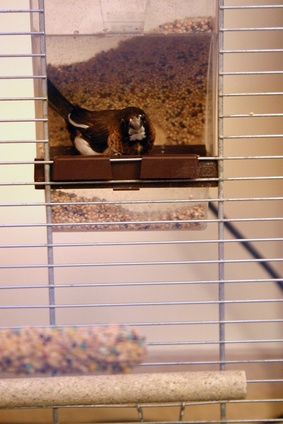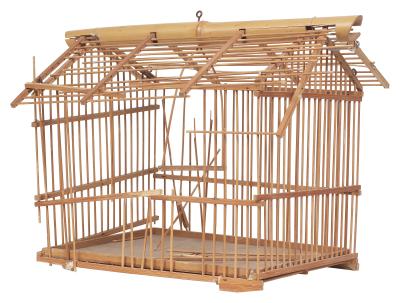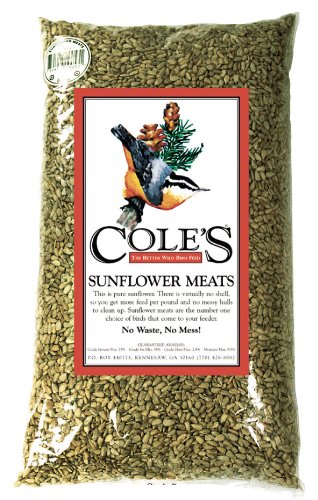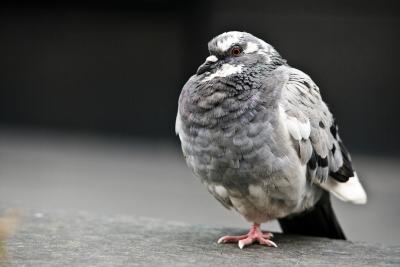Hummingbirds are a joy for a birdwatcher to observe. They are found only in the Western Hemisphere, from as far north as Southeastern Alaska and the Maritimes of Canada and as far south as Southern Chile. There are approximately 350 species of hummingbirds with 320 species found in the tropics. Within the family of hummingbirds is found the smallest bird in the world, the Bee Hummingbird of Cuba at 2.17 inches (5.5 cm) and weight 1.95gm (0.07 oz). Hummingbirds range in size from 2 inches to 8 inches.
The hummingbird derives its name from the humming sound that is produced by its rapid wingbeat. Generally the wingbeat is so rapid that the individual only sees a blur as most of these birds flap their wings about 50 times per second. The speed of the wingbeat depends on the size of the bird, the largest the Giant Hummingbird, has a wingbeat rate of 10-15 times per second. The fastest recorded rate was about 80 times per second, on a tiny Amethyst Woodstar, and the slightly smaller Bee Hummingbird - the world's smallest bird - may have an even faster rate. A hummingbird's wing is flexible at the shoulder, but inflexible at the wrist, this enables them to fly in many different directions. They can fly right, left, up, down, backwards and even upside down. To move away from the flowers on which they feed hummingbirds fly backwards and are the only bird able to fly backwards. While other birds get their flight power from the downstroke only, hummingbirds also have strength on the up-stroke. Though they fly very fast, they can suddenly stop and make a soft landing. They are so light they do not build up much momentum. Hummingbirds have poorly developed feet, so that although they are able to perch and will do so when feeding or resting, they do not walk. In order to move, even along a branch, they fly. Hummingbirds lift from perches without pushing off; they rise entirely on their own power, flapping their wings at almost full speed before lifting off. Hummingbirds sleep perched on branches with their neck retracted and their head forward, the bill pointed up at a sharp angle, and the feathers fluffed.
It is believed that hummingbirds live for only 3 to 4 years. They have a fast heartbeat with a rate of 1260 beats per minute having been measured in a Blue-throated Hummingbird. In torpid hummingbirds, the heart rate can drop to 50-180 per minute. Their fast heart rate and rapid wing motion require them to feed regularly throughout the day. It is reported that they must feed every 10 minutes and they may consume 2/3 of their body weight in a single day. A major part of a hummingbird's diet is the nectar they obtain from flowers and their bills are perfectly adapted to the various types of flowers that they feed on. Some hummingbirds have especially curved or elongated bills that allow them to feed on special flowers, eg the White-tipped Sicklebill hummingbird whose downward curving bill allows it to draw nectar from heliconias. The Ruby-Topaz Hummingbird has a short and slightly decurved bill that is suited to feeding on the flowers of the ixora shrub. The Blue-tailed Emerald has a short bill that is suited for feeding on the Hibiscus flower. the Copper-rumped Hummingbird has a straight long bill that allows it to feed on medium sized tube shaped flowers such as the Allamanda. In feeding, hummingbirds use their tongue to lap the nectar in a similar manner to cats lapping milk. Their tongue can extend a distance equal to their beak length. As they feed hummingbirds accidentally collect pollen and as they move from flower to flower, they help the flowers to reproduce.
Hummingbirds have little or no sense of smell, so colour is important to a hummingbird's search process for locating flowers containing nectar. While they will visit any flower that has sufficient nectar they prefer flowers that are red to orange in colour. It is believed that there are several reasons for this colour preference. Red flowers standout in a green background and so are more easily seen by the hummingbird. It is also believed that because hummingbirds compete with insects for nectar they choose flowers that are less likely to be visited by insects. Most insects do not see well at the red end of the colour spectrum and so may not visit red flowers while hummingbirds see the full visible spectrum.
Hummingbirds also need protein in order to build muscles, so they eat insects. They prefer to feed on small spiders and slow-flying insects such as gnats, small wasps and leafhoppers, which are rather buoyant in air and easy to catch. They also probe the bark and foliage for insects such as aphids, spiders, caterpillars and insect eggs. It is believed that up to one-half of their diet is made up of small insects. Hummingbirds are capable of living for extended periods without nectar as a component of their diet. They can quickly convert fat reserves and recently ingested insects to energy when deprived of nectar. Hummingbirds compete for nectar and insects and so they develop territories, which they guard aggressively. They will fight with other hummingbirds that enter their territory but serious harm is seldom inflicted during these fights. Also when food sources are scarce they fight to protect their source.
Most hummingbirds are green except hermits, which are mainly brown, and are known for the iridescence. These brilliant, iridescent colors of the hummingbird plumage are caused by the refraction of incident light by the structures of certain feathers. These structures split light into its component colors, and only certain frequencies are refracted back to the viewer. The brown colour in some hummingbirds is the result however of pigmentation. Hummingbirds groom themselves with their bills and claws, using oil from a gland near their tail. They also use their claws like a comb to groom their heads and necks. They sunbathe positioning their breast towards the sun and fluffing out, extending their neck and spreading their tail. Hummingbirds also take water baths using the water in shallow pools or cupped leaves. They flutter their wings or pull them straight back while lifting and spreading their tail; they dip their chins and bellies into the water. At times they can be seen sitting on a bare branch allowing the rain to soak through to their skin. After bathing they will preen and dry their feathers.
Hummingbirds build cup shaped nests, however hermits build long hanging nests usually attached to foliage. Male hummingbirds do not contribute to the building of nests or the care of young. All feeding is therefore left to the female. When feeding the female perches on the side of the nest, arches her back, stretches her neck, lifts her head, and holds her bill down to regurgitate nectar and half-digested insects to her babies. Her throat swells and she pumps her beak like a sewing needle.
Although various larger birds, snakes, and mammals raid hummingbird nests for eggs and chicks, this is not a major cause of death.

 Homemade Indoor Bird Cages
Homemade Indoor Bird Cages
Homemade In
Homemade Indoor Bird Cages
Homemade Indoor Bird Cages
Homemade In
 Easy to Make Bird Trap for Small Birds
Easy to Make Bird Trap for Small Birds
Easy to Make Bird Trap for Small Birds
Easy to Make Bird Trap for Small Birds
 The Faverolle Chicken
Chickens with BeardsThe Fave
The Faverolle Chicken
Chickens with BeardsThe Fave
 How to Attract European Goldfinches in the Garden
Goldfinches are a real delig
How to Attract European Goldfinches in the Garden
Goldfinches are a real delig
 How to Remove Bird Droppings
How to Remove Bird Droppings
How to Re
How to Remove Bird Droppings
How to Remove Bird Droppings
How to Re